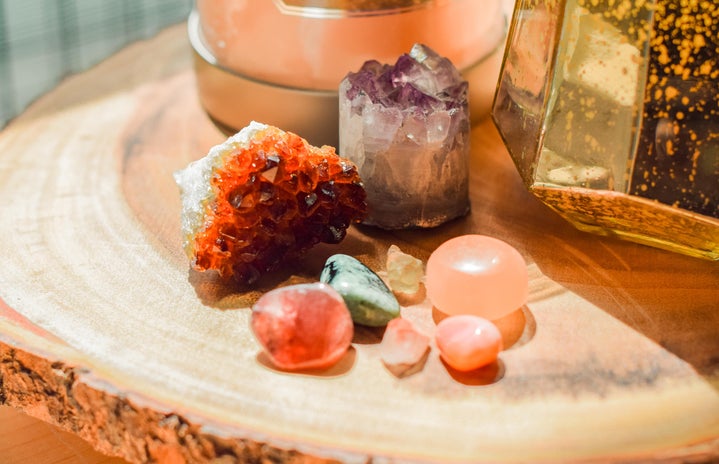Scroll through TikTok, Instagram, or any social media platform, and you are bound to find content about crystals. These precious stones have millions convinced of their benefits and magical powers. Their immense popularity has boosted a once-niche industry into a billion-dollar enterprise. But have you ever wondered where this fascination began?
The first documentation of crystals can be traced back to The Ancient Sumerians (c. 4500 to c. 2000 BC). The Sumerians were convinced of the healing powers these stones carried. They would make jewelry out of crystals, like amulets and talismans, to wear and, thus, reap the benefits. Crystal jewelry was meant to protect the individual from back luck and help ease any difficulty in their life.
Several regions like Ancient Egypt, Mesopotamia, Ancient Greece, Ancient Rome and India also used these gems as a form of therapy. This branch of healing was so popular that scholars assigned different healing properties to each crystal. In Egypt, women and men believed that rose quartz would make them more youthful. The enchanting amethyst crystal was used to prevent intoxication in Ancient Greece. Crystals even made their way into rituals and religious practices. In Ancient Egypt, the blue lapis lazuli stone was placed alongside the deceased to protect them in the afterlife.
Even in the transition to the new age movement, crystals continued to be used. Three primary cultures resumed the traditions of using these stones. Hinduism, Pagan and Wiccan practices, along with Native American sub religions, actively used crystals.
The Hindu religion’s use of crystals is significant and persistent. Hindu priests carefully examine birth charts and prescribe gems that will aid them in their journey. The use of gemstones and crystals also helps avoid bad karma and any further misfortune. In modern-day culture, the influence of Hinduism can be seen through extensive conversations regarding chakras, meditation and yoga. Many crystal sellers advertise their crystals’ abilities to balance chakras and help one’s body and soul reach alignment.
The use of crystals in pagan culture was so influential that we still use them to this day. Pagan practitioners believed that crystals signified certain planets. The practitioners combined their birth chart interpretations with crystals to achieve their desired outcome. Crystals were used as a customizable tool to help individuals in any circumstance. A similar philosophy is used in modern-day astrology, where crystals correspond to one’s star sign.
There isn’t much information known about The Native Americans’ use of crystals as most rituals were spread through word of mouth. We know that tribes had differing traditions, but the main objective was to respect mother earth, meditate and be in a state of high, positive vibrations.
Now that we know the origins of crystals, it’s easier to understand their popularity. In this day and age of green juices, detoxes, superfoods and yoga, anything that claims to aid health or relieve the tensions of life gains instant popularity. It certainly helps that celebrities, like Adele, Katy Perry, Miranda Kerr, Victoria Beckham, Jenna Dewan and Oprah Winfrey all rave about the benefits of using crystals. It is also important to note that there is no actual research that validates the claim that crystals help achieve better mental or physical health. However, their anecdotal benefits coupled with their glistening beauty, make crystals a hit in every market. In addition, their claim of helping with mental health has gained a lot of curiosity in a day and age where there is a 13% rise in mental health conditions. What are your views on crystal healing?

